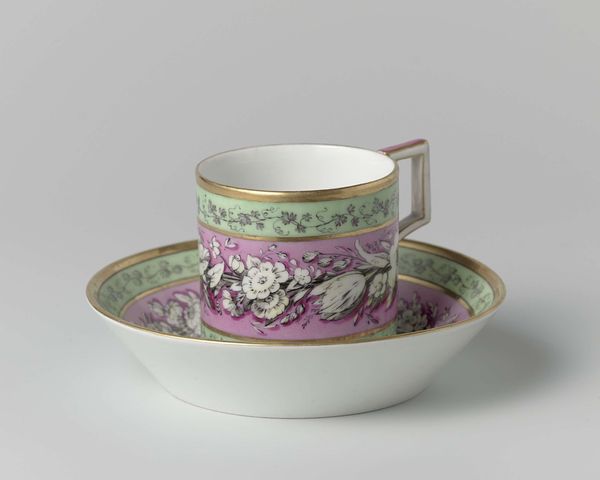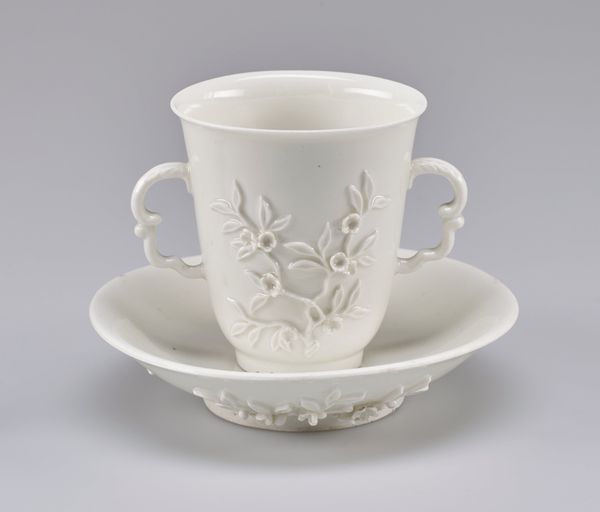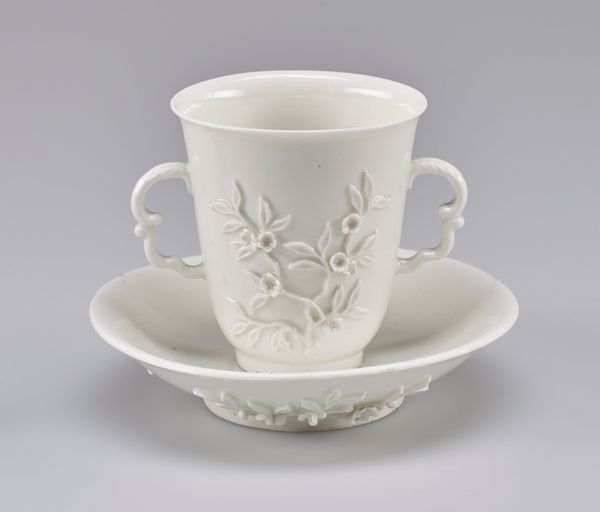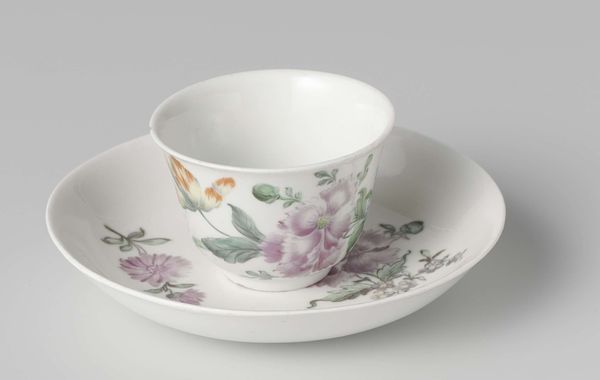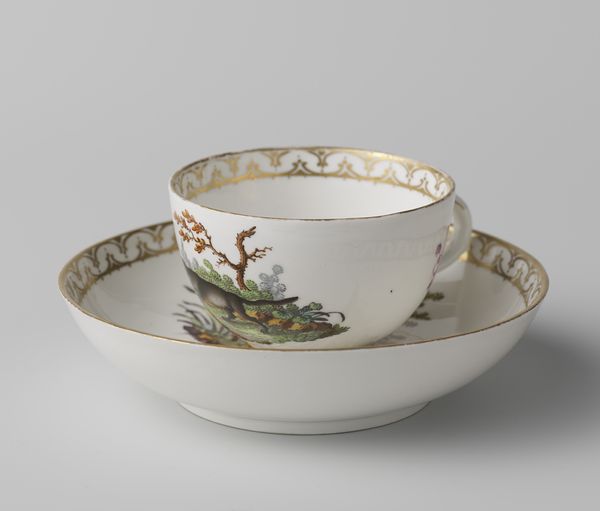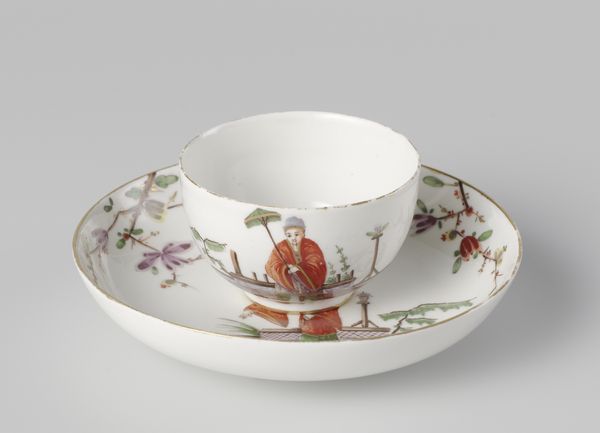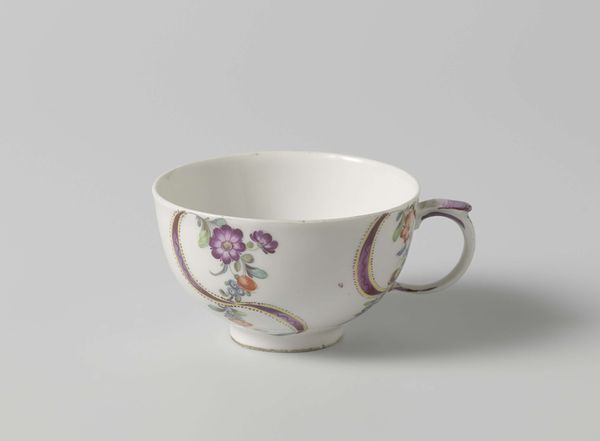
ceramic, earthenware
#
ceramic
#
round design
#
abstract
#
earthenware
#
stoneware
#
geometric
#
ceramic
#
decorative-art
Dimensions: height 5.0 cm, diameter 10.0 cm
Copyright: Rijks Museum: Open Domain
Curator: I'm struck immediately by the patterns here – sharp edges offset by smooth curves. Editor: Indeed. What we're looking at is an earthenware cup and saucer made by Franciscus Johannes Mansveld, around 1925 to 1930. The decoration, rendered in black and brown paint, shows strong abstract tendencies. Curator: I find it quite jarring, actually, this juxtaposition. It speaks to me of the tumultuous period between the wars, of clashing ideologies and a breakdown of previous artistic conventions. There’s almost a sense of primal energy, particularly with those sharp, almost aggressive strokes contrasting with those gentler swirls. Editor: From a purely design standpoint, there's an undeniable tension achieved through the strategic repetition and variation of geometric forms. The dark elements command visual weight, anchored by spiraling motifs. It suggests a fascinating push-pull dynamic. Curator: Wouldn't you say those darker elements allude to a struggle of dominance? There's a colonial narrative implied here too. Think of the historical context, the legacy of colonialism. Perhaps those geometric designs point toward abstracted non-Western imagery adapted by a Western hand? Editor: An interesting reading! What also jumps out to me is the masterful use of negative space, enhancing our comprehension of those bold patterns. Curator: The contrast between light and dark enhances its disruptive aesthetic. I'm thinking about gender here too, considering Manseveld as the creator during a transitional period where the male gaze permeated both industry and the arts, making design and domestic life more contentious than harmonious. This cup becomes a symbol of that tension. Editor: The cup and saucer’s circular form creates this harmonious dialogue despite those bolder graphic decisions. There's almost a Zen-like effect due to the balance achieved between those opposing visual energies. Curator: It certainly allows us to appreciate the intersections between craftsmanship, gender dynamics and shifting social power at the time. Editor: It does allow us to consider a very intimate everyday item, elevating it into a thoughtful discourse regarding aesthetics and the complex elements behind creative design.
Comments
No comments
Be the first to comment and join the conversation on the ultimate creative platform.


